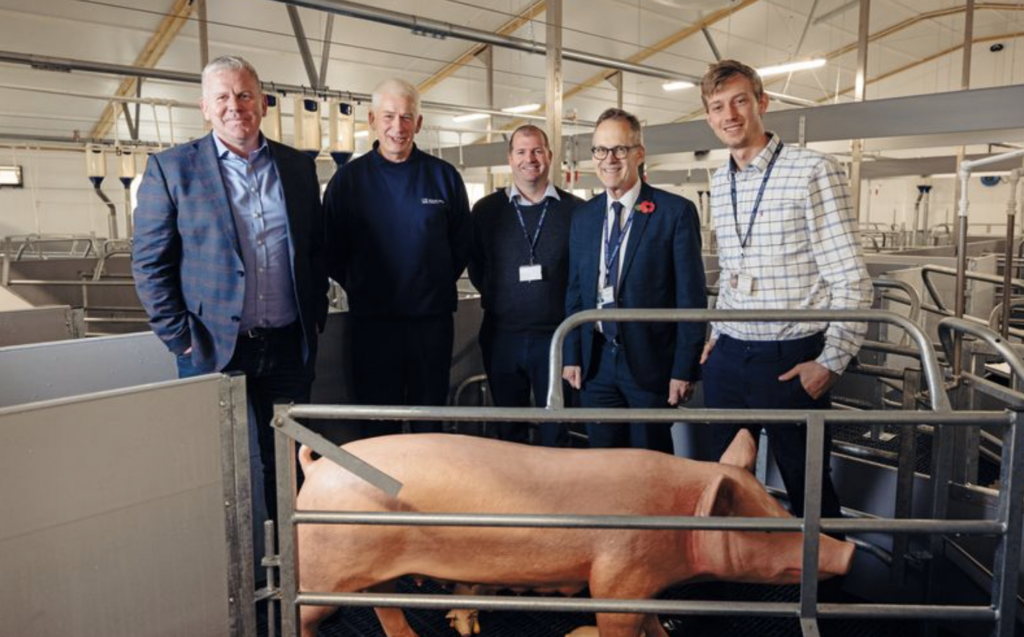The BBC Farming Today programme explored the pros and cons of flexible farrowing systems at Bishop Burton college, in the second part of its ‘Pig Week’.
Presenter Sarah Falkingham visited the East Yorkshire college’s new £1 million state-of-the art Pig Industry Training centre that includes 72 AM Warkup flexible farrowing pens. The unit, which is run in a unique collaboration with White Rose Farms, aims to teach the college’s students about new technology in both harrowing and feeding to improve pig welfare.
- You can listen to the interview HERE
Farm director James Richardson (pictured, right, at the unit’s opening last year) explained that the 6.5sq.m pens include a creep area in one corner that is segregated off, so the sow can’t access it. “In that corner, we have an electronic pad, which is just slightly warmer than the sow, which attracts the piglets to lie in that corner where they are nice and safe with no risk of getting crushed.
“We also have a gate that swings across, so that we can restrain the sow if we need to. When she starts showing signs of farrowing, we will restrict her. About 24 hours later, once we decide the piglets are strong enough, we open that pen up and the pig is then free to roam around the pen.
“We as a college see this as the future of indoor pig farming – that’s why we’ve invested so heavily in this to demonstrate to our students and to the wider industry that this is possible and this is where we think it’s going to go.
“The indoor crate is likely to be banned within the next few years and we’re waiting for that minimum pen standard and what Defra expect the minimum to be.”
Asked about piglet mortality rates compared with sows giving birth outdoors, he added: “Using our system, the mortality is greatly reduced. In an outdoor system, there are no mechanical controls that would prevent the piglet from being squashed.
“Also, outside in cold conditions piglets are incredibly susceptible to cold, whereas we have a perfect temperature-controlled environment, but we also have air quality sensors that also monitor the ammonia the CO2 and everything else in the air.”
The feature also explores the unit’s electronic sow feeding system (ESF) that feeds that the sow to ensure it receives its daily nutritional needs.
- You can listen to part one of Pig Week featuring an overview of the current state of the industry from Pig World editor Alistair Driver HERE




